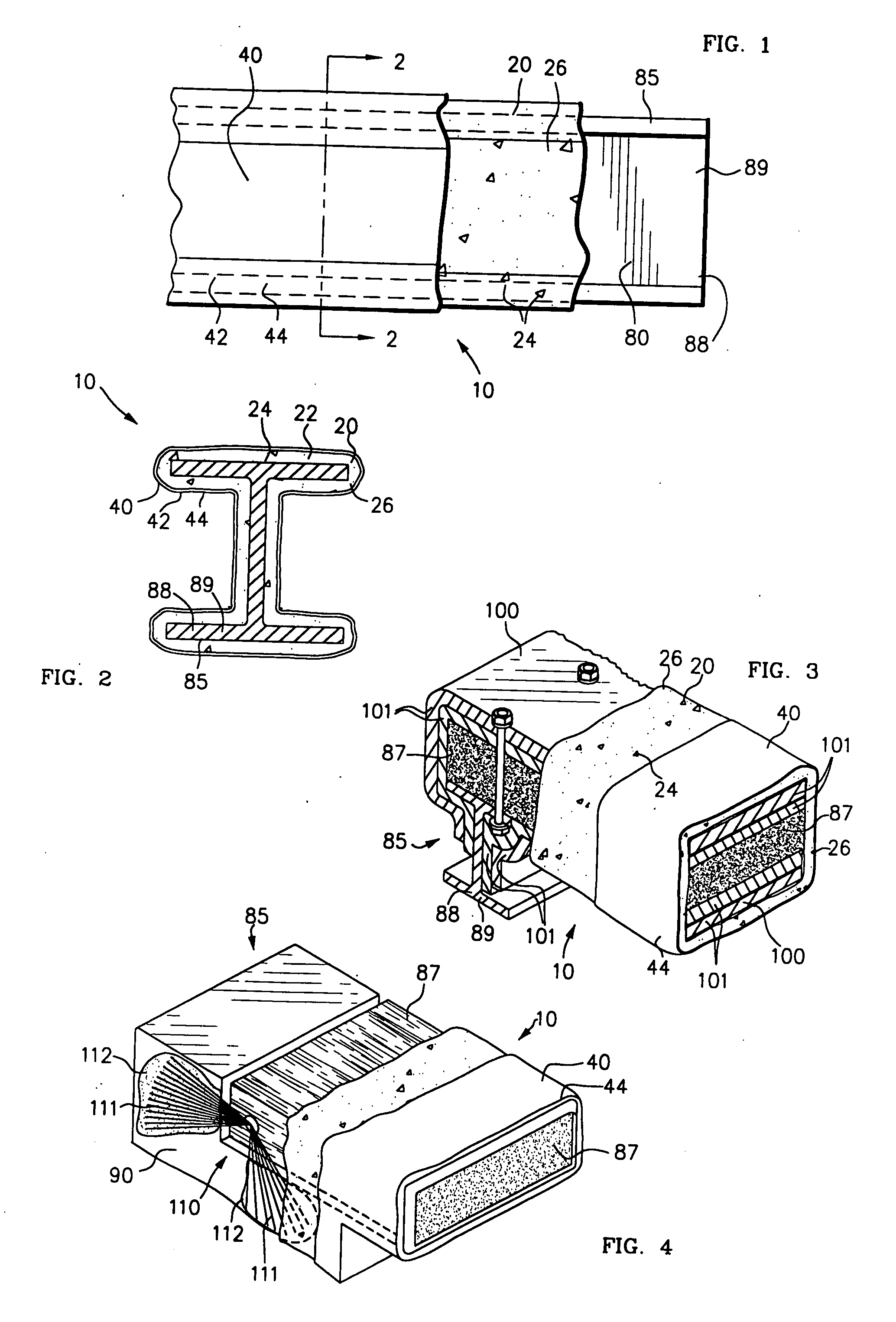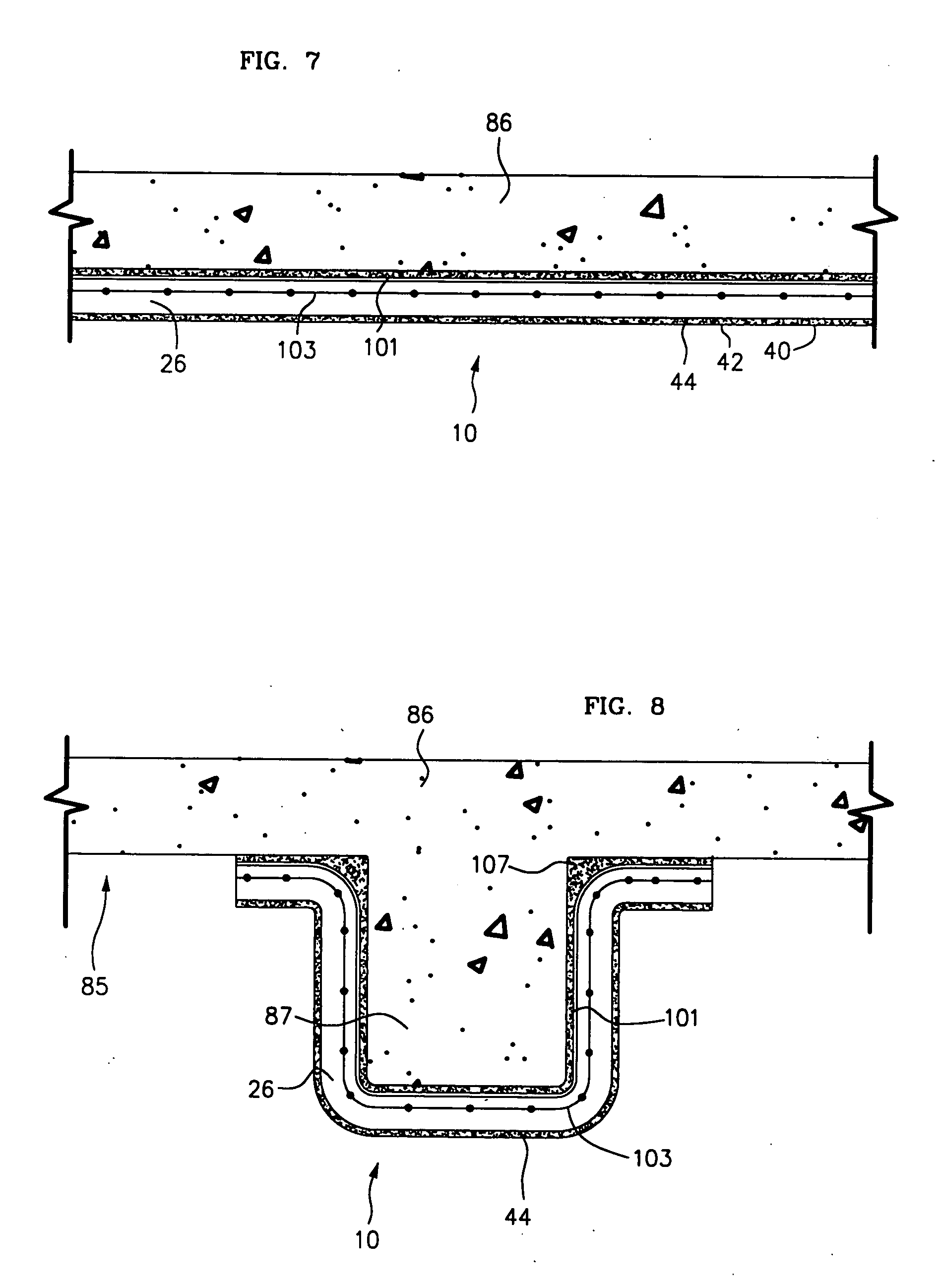Fire protection coating for FRP-reinforced structure
a technology of reinforced structure and fire protection coating, which is applied in the direction of fireproofing, weaving, layered products, etc., can solve the problems of affecting the safety of the structure, delay the ignition of the structural member, etc., and achieve the effect of reducing the thickness, reducing the cost, and slowing the heating of the underlying structural member
- Summary
- Abstract
- Description
- Claims
- Application Information
AI Technical Summary
Benefits of technology
Problems solved by technology
Method used
Image
Examples
Embodiment Construction
[0028]FIG. 1 is a side elevation view, partly cut away, of a steel girder 88, such as I-beam 89, with fire protection coating 10 applied according to the method of the present invention. FIG. 2 is a sectional view, taken on line 2-2 of FIG. 1. Fire protection coating 10 includes an insulation layer 20 and a diffusion barrier layer 40.
[0029]FIG. 3 is a perspective view, partly cut away, of fire protection coating 10 over a structural member 85 that includes an 1-beam 89, a beam 87, and reinforcement 100. Reinforcement 100 consists of a plurality of fiber / resin composite panels or wraps 101 wrapped upon and attached to I-beam 89 and beam 87. Panels 101 have been added to existing structural member 85 to provide additional resistance to lateral forces, such as from earthquakes, high winds, or explosions. Reinforcement 100 is typical of retrofitted fiber / resin composite seismic reinforcement to an existing structure. Composite panels 101 are typically of epoxy-impregnated fiberglass.
[...
PUM
| Property | Measurement | Unit |
|---|---|---|
| thick | aaaaa | aaaaa |
| thick | aaaaa | aaaaa |
| thick | aaaaa | aaaaa |
Abstract
Description
Claims
Application Information
 Login to View More
Login to View More - R&D
- Intellectual Property
- Life Sciences
- Materials
- Tech Scout
- Unparalleled Data Quality
- Higher Quality Content
- 60% Fewer Hallucinations
Browse by: Latest US Patents, China's latest patents, Technical Efficacy Thesaurus, Application Domain, Technology Topic, Popular Technical Reports.
© 2025 PatSnap. All rights reserved.Legal|Privacy policy|Modern Slavery Act Transparency Statement|Sitemap|About US| Contact US: help@patsnap.com



